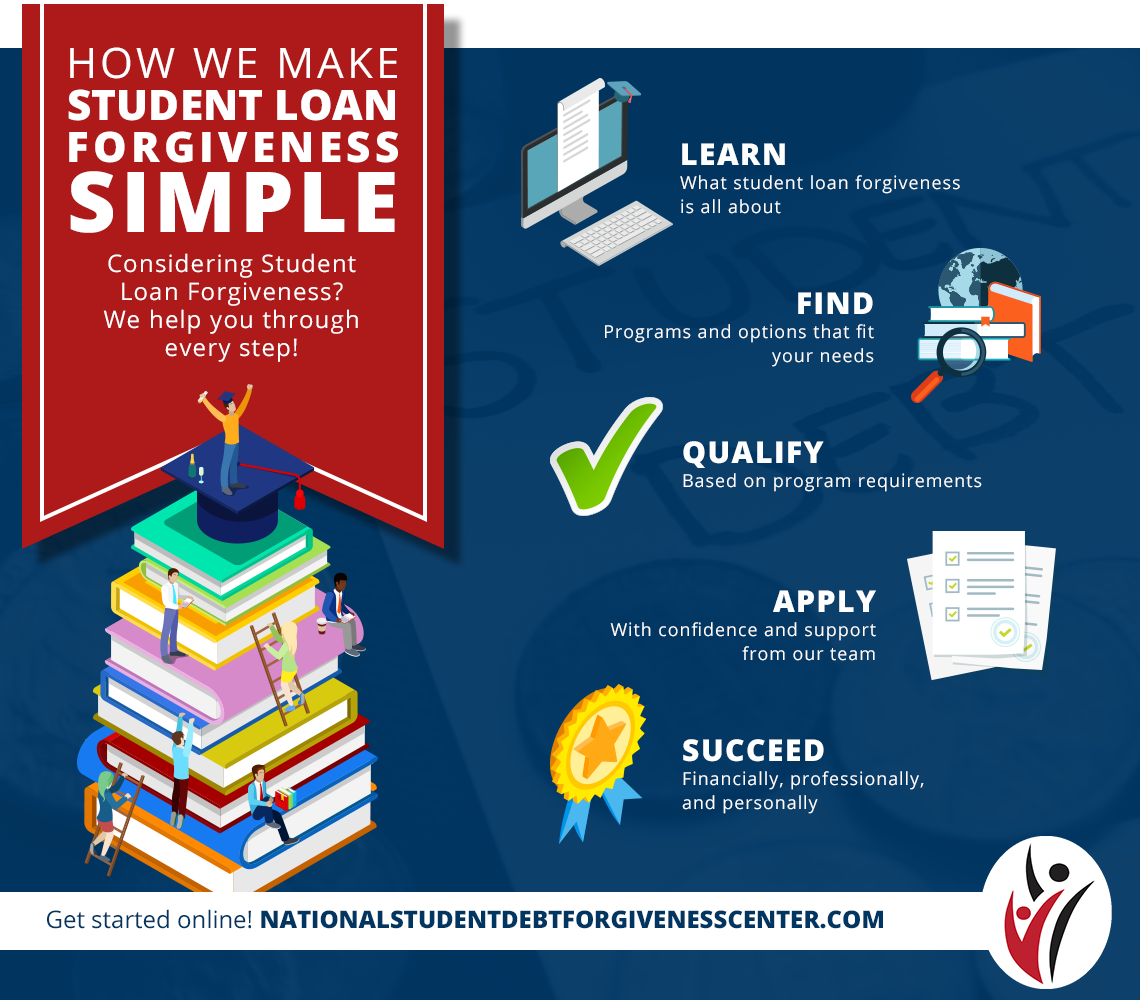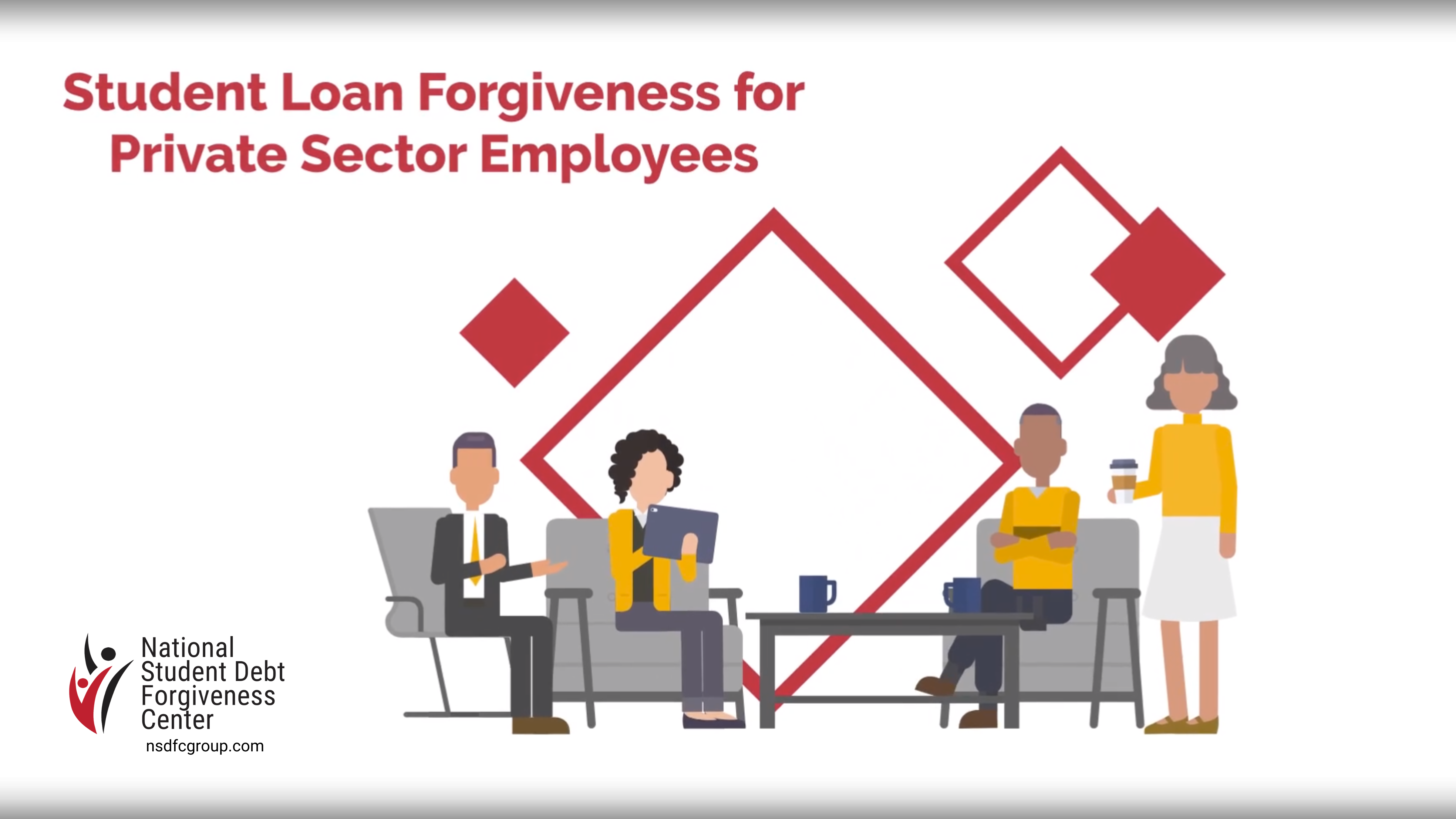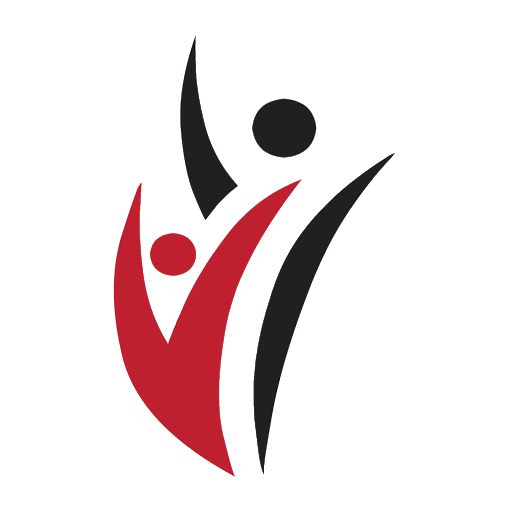Student Loan Repayment Program Consultants
Student Loan Forgiveness Programs
At National Student Debt Forgiveness Center, our consultants understand how monotonous and confusing it can be to navigate the process of applying for student loan forgiveness. That is why we are here to help. There are several programs available to assist borrowers with the burden of federal student loan debt. Our goal is to simplify these processes in order to help maximize your forgiveness and minimize your frustration.
What is student loan forgiveness?
Under certain circumstances, you can have your federal student loans forgiven, canceled, or discharged. They mean essentially the same thing: you won’t have to pay back some or all of your loan(s).
Not all loan forgiveness programs are the same, though. There are different rules for eligibility, payment length, and applying. Public Service Loan Forgiveness (PSLF) is the most common way people have their student loans forgiven, but two other federal forgiveness programs are Teacher Loan Forgiveness (TLF) and Income-Driven Repayment (IDR) Forgiveness.

Federal Forgiveness Programs at a Glance
Employment: Government and 501(c)(3) non-profit organizations
Loan type: Federal Direct loans
Payment plan: Income-Driven Repayment (IDR)
Forgiveness period: 10 years or 120 qualifying payments
Amount: Remaining balance after 120 qualifying payments
Tax status: Tax-free forgiveness at federal level
Learn more about PSLF here.
Employment: Low-income school or educational service agency
Loan type: Federal Direct loans
Payment plan: Income-Driven Repayment (IDR)
Forgiveness period: Five “complete and consecutive” academic years, at least one which must have been after the 1997–98 academic year.
Forgiveness amount: Up to $17,500
Tax status: Tax-free at federal level
Learn more about TLF here.
Employment: Private (for-profit) or public
Loan type: Federal Direct loans
Payment plan: Income-Driven Repayment (IDR)
Forgiveness period: 20-25 years, depending on repayment plan
Forgiveness amount: Any remaining balance after 20-25 years
Tax status: Forgiveness amount considered taxable income
– Until Jan. 2026, forgiveness not taxed federally as part of COVID-19 relief package

What is Income-Driven Repayment (IDR) Forgiveness?
Under all income-driven repayment, or IDR, plans, any remaining loan balance is forgiven if your federal student loans aren’t fully repaid at the end of the repayment period (either 20 or 25 years), depending on the plan you’re enrolled in, the loans you have, and whether you took out loans for undergraduate or graduate education.
Periods of student loan repayment economic hardship deferment, repayment under certain other repayment plans, and periods when your required payment is zero also count toward your total IDR forgiveness period.
Keep in mind: it is possible you might repay your loan(s) in full before reaching the maximum repayment period. If that happens, there will be no balance left to be forgiven.
How IDR Forgiveness Compares
There are four IDR plans. The duration of repayment depends on the IDR plan and the type of loan(s).
| 1. Revised Pay As You Earn (REPAYE)* | 20 years (undergraduate loans only) / 25 years (graduate or professional studies) |
| 2. Pay As You Earn (PAYE) | 20 years |
| 3. Income-Based Repayment (IBR) | 20 years of payments for borrowers on or after July 1, 2014 / 25 years if you’re not a new borrower on or after July 1, 2014 |
| 4. Income-Contingent Repayment (ICR) | 25 years |
*The Saving on a Valuable Education (SAVE) plan has different repayment lengths, depending on the loan type and amount of loan. Since a federal court issued an injunction preventing the U.S. Department of Education from implementing parts of the SAVE Plan, though, the information here only pertains to the IDR plans in place prior to the SAVE Plan’s introduction. The REPAYE Plan replaced the SAVE Plan prior to the injunction. You can learn more here. We will update our page when more information becomes available.

How can the program help me?
- More affordable monthly payments
- Maximize forgiveness amounts
- Receive loan forgiveness in 20-25 years
Direct Loans
Any loan that is part of the William D. Ford Federal Direct Loan Program qualifies for PSLF. Payments made under a Direct Consolidation Loan can also qualify. Loans received from private lenders do not qualify for the program.
Qualified Payments
Making a qualified payment means that they are direct loan payments and that they are made on time. “On time” means no later than 15 days after the due date. Payments made after Oct. 1, 2007 can qualify, and they do not have to be consecutive, which may apply if your loans are in a grace period or have breaks for forbearance.
Eligible Careers
Working in a position that is eligible for PSLF is less about your job title and more about the company that you are working for. You can qualify if you work for a non-profit that is a 501(c)(3) tax exempt company, or any federal, state, county, or city government organization. Labor unions and for-profit organizations do not qualify.
Full-Time Employment
Full-time employment is also a requirement of working in an accepted field. For purposes of the PSLF, full-time work is considered anything more than 30 hours per week. This remains true if you work more than one qualifying job. As long as the total of the two positions is more than 30 hours per week, you can qualify.
Annual Recertification
If you are working towards loan forgiveness through PSLF, it is important that you submit your income driver payment application and your Employment Certificate annually, or any time you change employers during that ten year span. This will save you time and headaches in the long run, and ensure that you remain eligible. You will also need to submit an Income Driven Repayment Application.
Who Is Eligible?
To be eligible, you must work for a non-profit 501(c)(3) organization or government organization.
The following are examples of careers and organizations that qualify:

Public Charities

Religious Organizations

Public Education

Healthcare

Law

Military

Law Enforcement

Public Works


Select Page